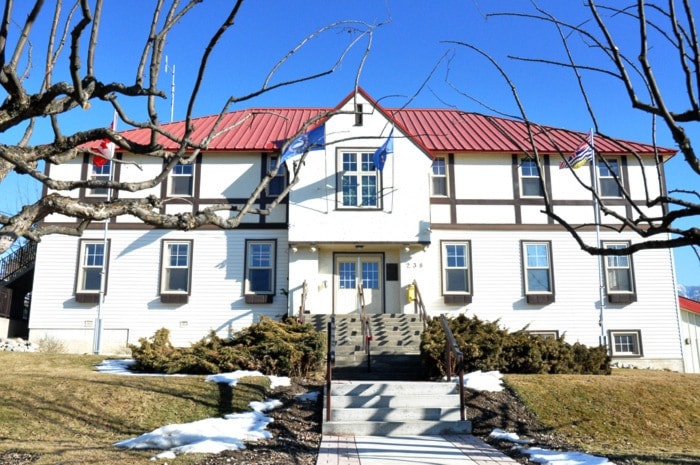Gone are the days when small B.C. municipalities functioned from budget to budget. At Tuesday’s regular meeting, Creston town council adopted the five-year financial plan (2015-2019), a rolling plan that is updated yearly.
Finance director Steffan Klassen described his process for creating the statutory document to council on April 14, when the plan was given its first three readings.
“2015 economic growth is expected to be better than 2014 at 2.7 per cent,” he said. “Consumer and government spending will be restrained due to high debt levels and deficits.”
Klassen said the continuing increase in baby boomer retirees is a factor, the housing market is trending upward and that the U.S. economy continues to recover.
In Creston, he said that the struggling commercial sector will benefit from a lower Canadian dollar, which will keep more shoppers at home. The Creston economy is bolstered by the stability of the health care sector, sawmills and the Columbia Brewery.
“Tourism continues to improve,” he said. “2015 is expected to be up five per cent higher, mainly due to the change in exchange rates.”
Once again, policing costs will be the driving factor in the need to increase the municipal portion of property taxes.
With the policing reserve fund gradually being drained, taxpayers will foot an additional $130,000 of RCMP policing costs, adding 3.65 per cent to the tax load.
Other increases — a consumer price index factor of 0.3 per cent, the fire department’s new first responder service (0.5 per cent) and a $36,000 addition to the infrastructure replacement reserve (one per cent) — will result in a 5.45 per cent tax jump.
Among the challenges the town faces in 2015-16, Klassen said, is that commitments for balanced budgets by the federal and provincial government will likely reduce the availability of grants for infrastructure.
“Gas tax and provincial transfer amounts are not increasing,” he added.
As well, provincial initiatives on policing, carbon neutrality, affordable housing and water conservation download costs to the municipality, he said.
Taxes for general municipal collections will form 34 per cent of local property tax bills in 2015. Municipal policing takes a 10 per cent slice of the pie and provincial education takes 22 per cent. Other town revenues come from utility frontage taxes (nine per cent of the tax bill). The Regional District of Central Kootenay takes a 23 per cent share of the property tax pie and the remaining small portions go to the Central Kootenay and East Kootenay regional hospital districts, Municipal Finance Authority and BC Assessment Authority. The proportions were nearly identical in 2014.
Capital spending totaling $1.644 million will include the town’s share of the Pine Street realignment, fire vehicles, public works vehicles, chip sealing and fire hall renovations.
Klassen provided an outline of the effect of transferring policing costs to the municipality when Creston reached a population of more than 5,000. The policing reserve fund has gradually been applied to annual budgets, helping to slow tax increases. Another $100,000 from the fund is included in the 2015-16 budget and the remaining $56,000 will be drained in the following fiscal year.
“Creston cost (of policing) is higher than many municipalities our size due to geographic considerations,” he said.
The Town of Creston continues to lobby to reduce staffing and prisoner costs, he added.
